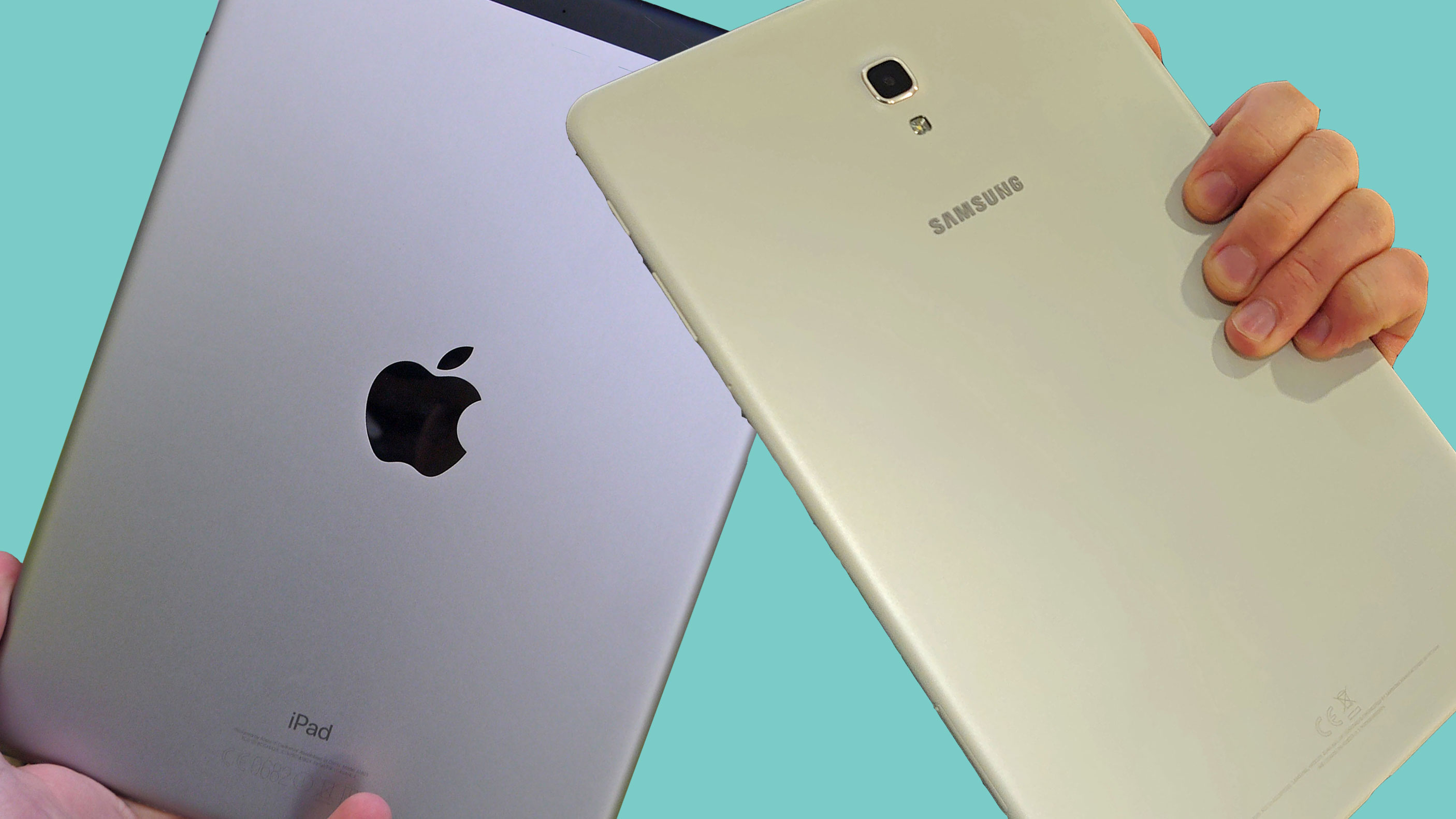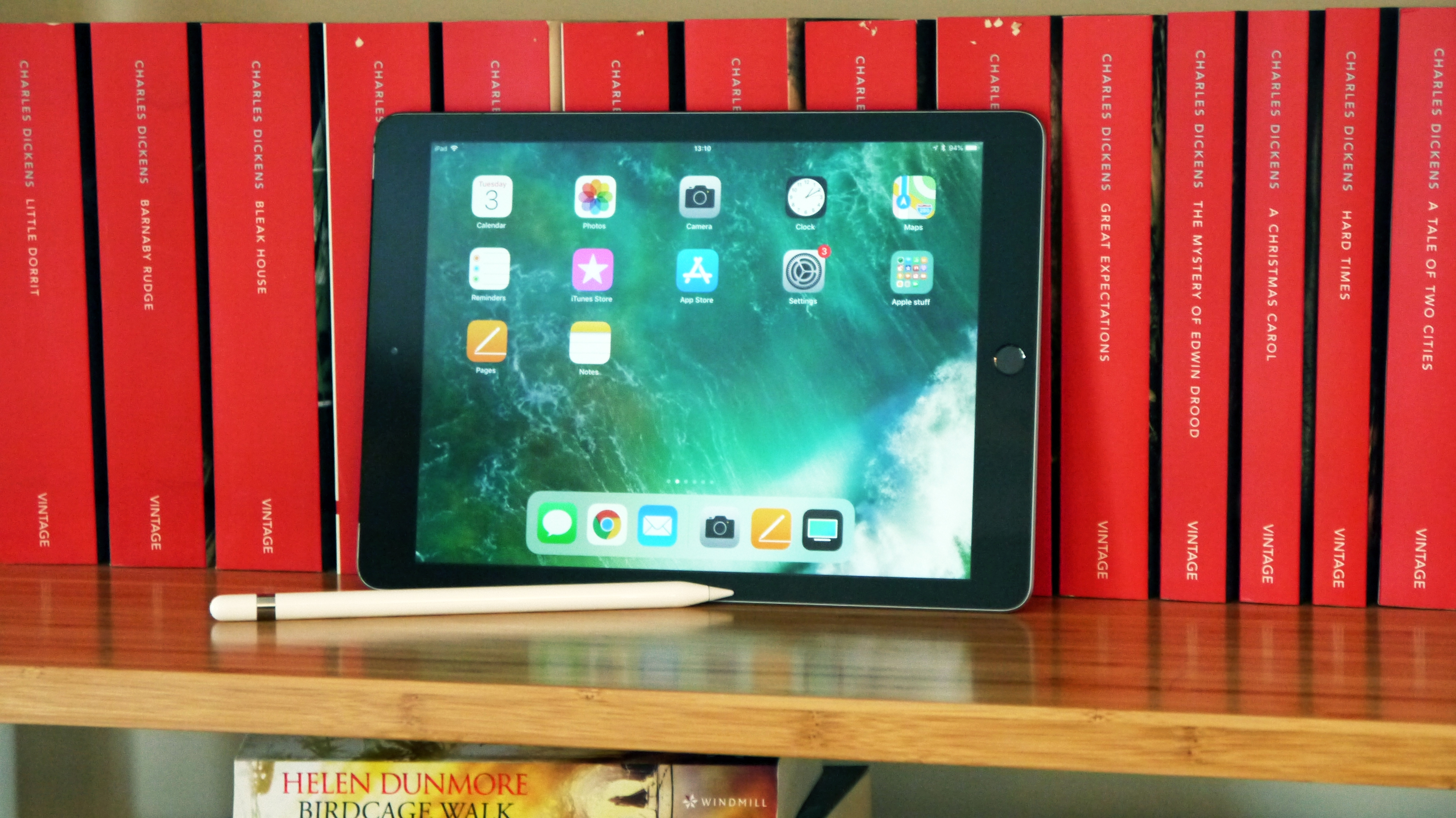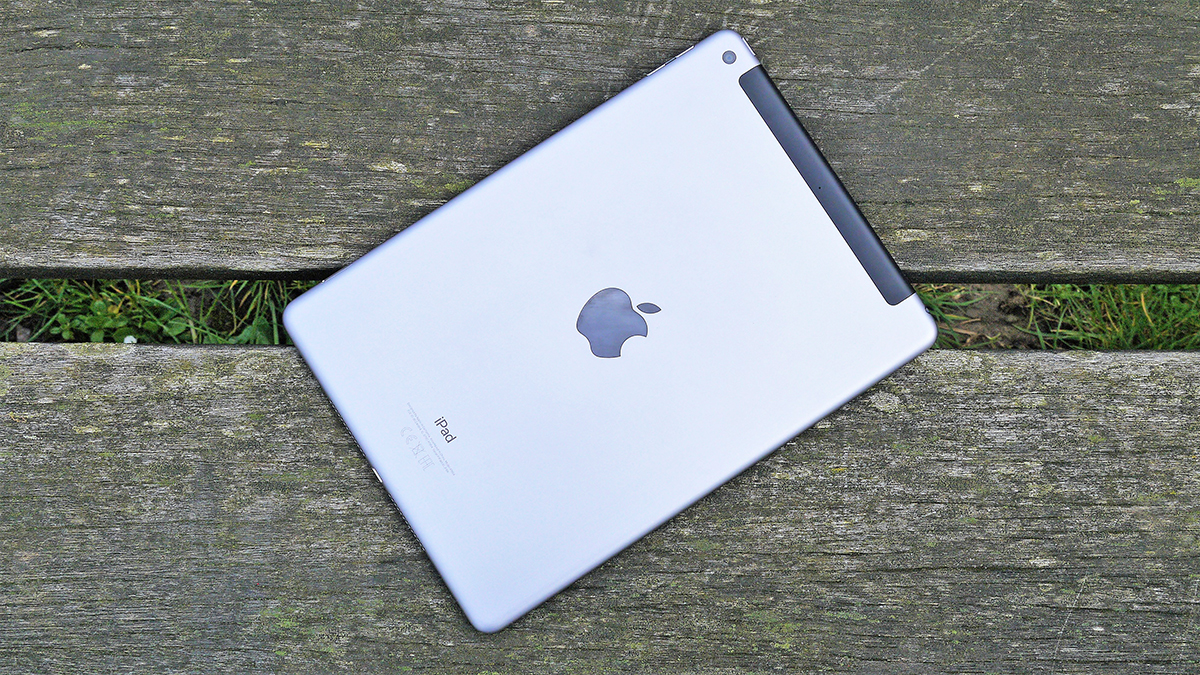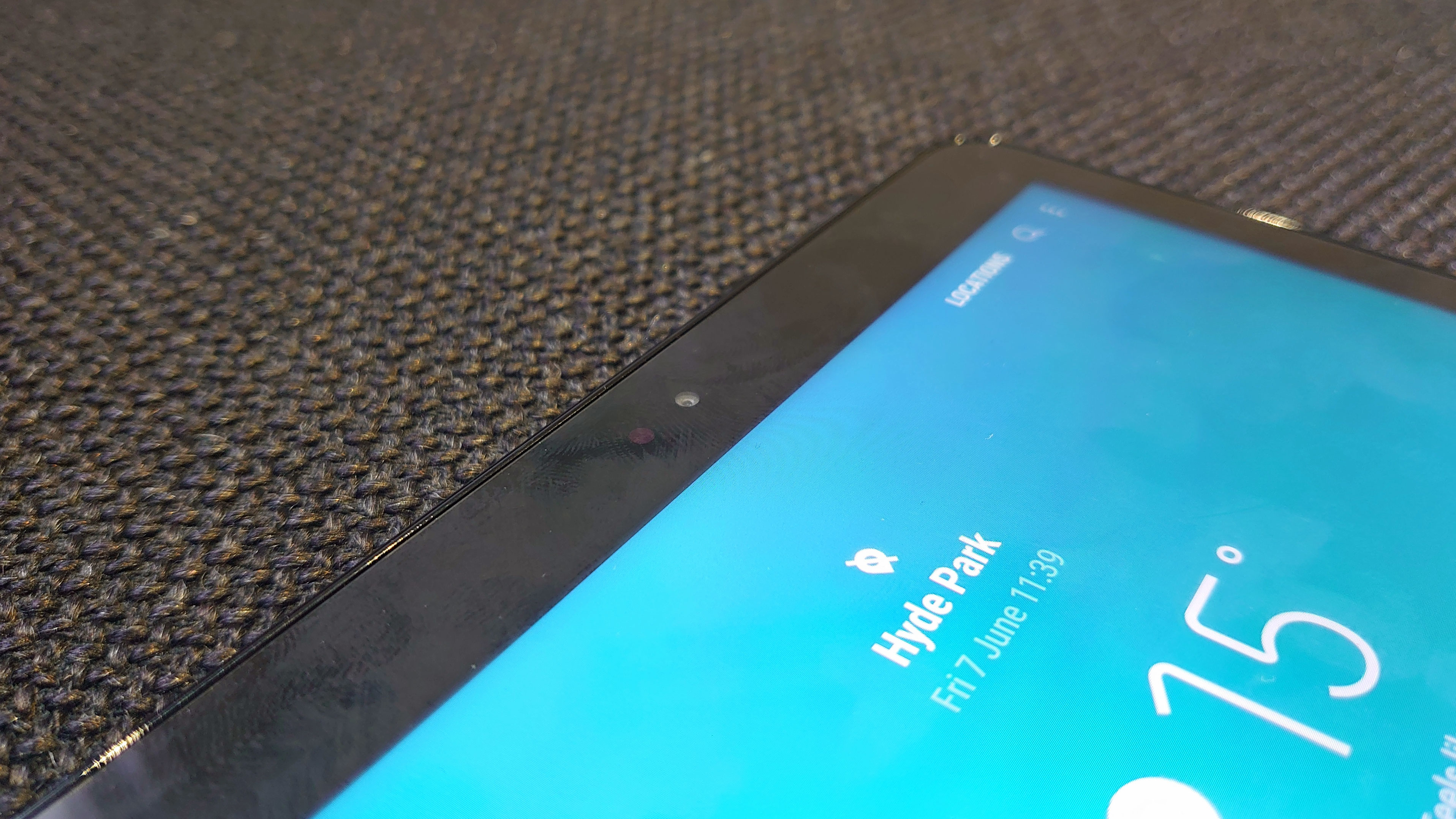iPad 9.7 vs Samsung Galaxy Tab A 10.5: which is the best budget tablet?
Battle of the brands

If you're in the market for a tablet, but don't want to splash out too much, there are two main brands you're going to be looking at – iPads and Samsung Galaxy Tabs.
Apple's most basic iPad range, most recently the iPad 9.7 (2018), brings Apple's iOS operating system from iPhones to slates, and is affordable by Apple standards.
Samsung Galaxy Tabs come in various models, but the cheapest is the Tab A range, and the last entry in that line was the Samsung Galaxy Tab A 10.5 (2018). It runs on an Android operating system, so presents quite a different experience than the iPad 9.7.
- These are the best tablets
- These are the best Android tablets
- Check out the best iPads
So which entry-level tablet should you spend your money on? We'll run through the main differences between the slates to help guide your decision.
iPad 9.7 vs Samsung Galaxy Tab A 10.5: price
The first major difference between the iPad 9.7 (2018) and Samsung Galaxy Tab A 10.5 (2018) is the price – although both are meant to be entry-level slates aimed at a more affordable price point, one is quite a bit more pricey than the other.

You can pick up the Samsung Galaxy Tab A 10.5 for $329 / £249 (roughly AU$470), or $419 / £299 (roughly AU$600) if you want a version that can connect to LTE networks.
Whichever model you pick, it only comes in a 32GB size. Still, that's a fairly low price for a tablet, so it definitely falls into the 'affordable' bracket.
Get daily insight, inspiration and deals in your inbox
Sign up for breaking news, reviews, opinion, top tech deals, and more.
The Galaxy Tab A 10.5 (2018) isn't available in Australia though, so if you're based there, your choice between tablets is set to be a lot easier.
The iPad 9.7 (2018) will set you back a little more, as it starts at $329 / £319 / AU$469 for a 32GB Wi-Fi model, rising to $559 / £539 / AU$799 for a 128GB model with Wi-Fi and LTE.
That's generally quite a price rise on the Galaxy Tab A 10.5, especially in the UK, so you'd expect a better tablet as a result.
Design and display
In terms of screens, you're actually getting the same tech in both the iPad 9.7 (2018) and Samsung Galaxy Tab A 10.5 (2018), in the form of IPS LCD touchscreens – that means there shouldn't be a huge difference between the two in terms of max brightness and how good colors look.
As the names suggest, the sizes are different though, at 9.7 inches and 10.5 inches respectively, so you're getting a bigger screen on the Galaxy Tab A.

The resolution of the iPad is 1536 x 2048 for a pixel density of 264 pixels per inch, while the Galaxy Tab A is 1200 x 1920 for 216 pixels per inch, so while the latter is bigger, images shown on it won't be as sharp. This might be a concern if you're a cinephile or someone buying a tablet for artwork, but many people might not notice the difference.
As one tablet is bigger than the other in screen size, it also has a larger body. The Galaxy Tab A 10.5 has dimensions of 260 x 161.1 x 8mm compared to the iPad's 240 x 169.5 x 7.5mm, so the former is longer and thicker, but the iPad is actually wider. That's in part due to the differing aspect ratios - the Galaxy Tab is 16:10, while the iPad 9.7 is 4:3.
You're also getting a heavier device in the Galaxy Tab A 10.5, as the Wi-Fi model weighs 529g, which is 60g more than the 469g Wi-Fi iPad. There's a similar difference for the LTE model, with the Samsung Galaxy Tab A 10.5 weighing 534g, while the iPad 9.7 weighs 478g.
Both tablets have glass fronts, but the iPad 9.7 has an aluminum body, while the Galaxy Tab A 10.5 is plastic – this makes the latter feel a little less premium. In general, though, both conform to the standard tablet design of a rectangular device with thick bezels.
Both slates have 3.5mm headphone jacks, which is something many premium tablets are missing, but while the Galaxy Tab A 10.5 has a USB-C port, which lets it charge quite quickly and makes it compatible with many peripherals, the iPad has a Lightning port, which makes for slower charging.

One other important point worth noting is the Galaxy Tab A's rear camera bump, which sticks out quite a way – you can't actually put the tablet flat on a table without it rocking, so you'll have to splash out on a case to compensate for this unless you like to hold your tablet while you use it.
Battery life and camera
There's no clear winner in terms of battery life between the tablets, and that's because they both take roughly as much use before running out of charge.
In the Samsung Galaxy Tab A 10.5 (2018) you'll find a 7,300mAh battery, and there's an 8,827mAh power pack in the iPad 9.7 (2018) – while that makes it seem like the iPad will last longer, don't forget it has a higher resolution screen, so you might find them lasting around the same amount of time.
In fact if anything Samsung's might last longer, as the company claims its slate can last for up to 15 hours of internet use on Wi-Fi, while Apple quotes 10 hours.
Charging is a similar story – the Lightning port used on the iPad is rather outdated, compared to the USB-C on the Galaxy Tab A, so you'll find the latter charges quite a bit quicker than the former.

Camera performance isn't something you necessarily look for in a tablet, and as such the gadgets rarely have powerful cameras, but slate snappers can still be useful for a range of functions.
Both tablets have an 8MP rear camera, and pictures you take on them will have roughly the same level of quality. However while the iPad 9.7 has a 1.2MP front camera, the Galaxy Tab A's is 5MP, so your video calls and selfies will be of a higher quality on Samsung's slate.
Specs and features
Inside the iPad 9.7 (2018) you'll find the Apple A10 Fusion chipset, which was also used in the iPhone 7, and would now rank among the mid-range modern processors.
The Samsung Galaxy Tab A 10.5 comes with the Snapdragon 450 chipset which, again, is a few years old, but it was a mid-range rather than flagship chipset when it was released, so overall it's the lesser of the two.

The Galaxy Tab A does beat the iPad in terms of RAM, with 3GB as opposed to the Apple tablet's 2GB, but in benchmark tests we found the iPad had about 50% more power than its Galaxy rival, likely because of the chipset.
When using the interface, the iPad is noticeably quicker and easier to operate, and in general iOS is better optimized for tablets than Android – the performance difference between the slates becomes more obvious the more you use them, and it quickly becomes clear the iPad is much easier to use.
The iPad also has a fingerprint scanner in its home button, whereas you'll have to type in your password for the Galaxy Tab A, which makes unlocking the iPad much quicker.
Plus, the iPad 9.7 (2018) supports the Apple Pencil, making it a better bet for digital doodlers - though this costs extra.
Verdict

When you're using the Samsung Galaxy Tab A 10.5 (2018), it feels a little lacking, both in terms of interface speed and software, and the feel in your hands, and Android just isn't well optimized for tablets yet.
However, the Galaxy Tab A is a cheaper device, and provides you with a bigger screen, so if you want your tablet as a big device to watch content on the go, it's a safe bet, especially as it also has potentially better battery life.
But if you want to use your tablet for work or playing games, the iPad 9.7's extra processing power and better operating system should lure you in.
- Check out our guide to the best tablets

Tom Bedford joined TechRadar in early 2019 as a staff writer, and left the team as deputy phones editor in late 2022 to work for entertainment site (and TR sister-site) What To Watch. He continues to contribute on a freelance basis for several sections including phones, audio and fitness.